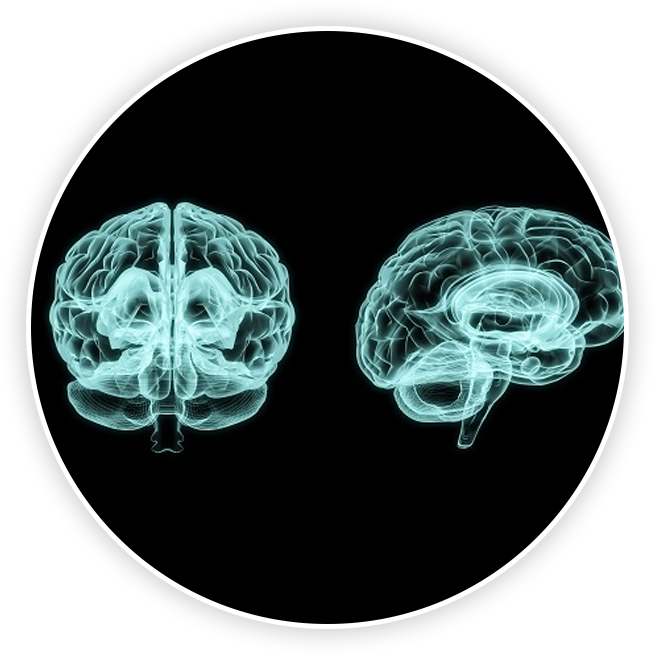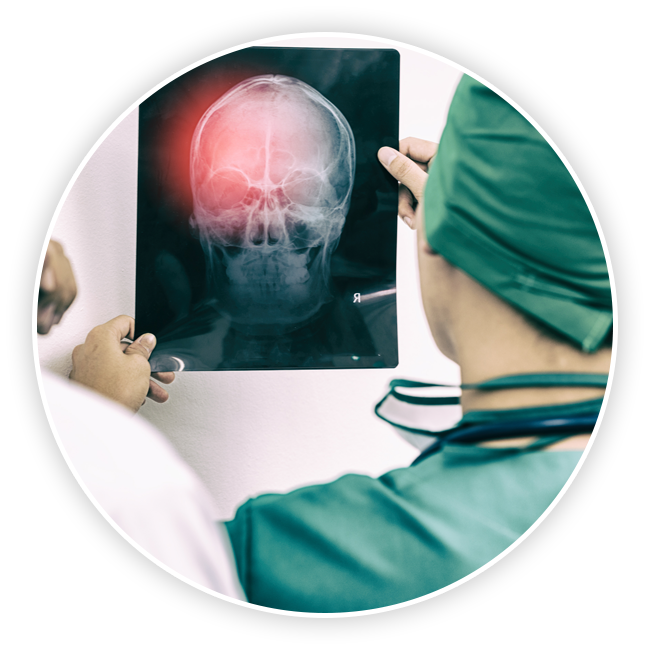HOME
Proving a Traumatic Brain Injury
An array of psychological, physical, and mental tests are available which can determine the location, extent and severity of impairment/deficits within each brain function caused by a head injury. Neuropsychological testing, clinical physiologists, PET scans, SPECT scans and MRIs also provide information about a brain injury.
Those who suffer skull fractures, loss of consciousness and/or coma typically are diagnosed as severe injuries, with obvious physical impairments that are easily verified. Because they have suffered objective physical injuries, their resulting impairments are readily accepted as having been caused by the initial impact.
Other cases present more difficult proof issues, since symptoms may not be as readily apparent to a jury made up of people who were not familiar with a plaintiff’s normal functioning prior to an accident. Your personal injury attorney must have a thorough understanding of the symptoms of TBI in order to adequately present a case for damages to the jury.
TRAUMATIC BRAIN INJURY
Physical Indications of TBI
Some of the physical consequences that may occur after a brain injury include decreased muscle control, paralysis, weakness, seizures, sensory losses, and difficulty speaking or swallowing, lost motor control or weakness of one arm or leg or on one side of the body is known as hemiparesis, poor balance, decreased endurance, loss of the ability to plan movements of arms, legs and poor coordination are evident.
Seizures can occur immediately or may be delayed until months or even years after the initial trauma. A seizure is a burst of abnormal electrical energy in the brain. In generalized seizures, or major motor seizures, the entire body stiffens. Loss of consciousness, irregular breathing, and loss of bowel and bladder accompany severe shaking. After regaining consciousness, the patient reports soreness and confusion. A second category of seizures are known as focal motor or partial seizures which present as jerking movements or twitching. Consciousness remains intact and often is viewed as a loss of concentration. Often the patient does not know that a seizure has taken place.

Following TBI, sight, sound, taste, touch and smell can suffer decreased or increased sensitivity, or a complete loss. Loss of sensation to parts of the body and hypersensitivity are also common. Double vision, loss of depth perception, and an inability to see on one side of the body can occur. Loss of the inability to know where arms and legs are in relationship to the body also takes place.
Fatigue is extremely common in the early stages following injury. In many cases the fatigue is profound, and staying alert and awake for these patients is difficult. This can easily be confused with being unmotivated because these patients have difficulty paying attention and are sleepy.
Speech disorders follow damage to the cranial nerve which enervates the face. Dysarthria, difficulty in pronouncing words, characterized by slurred or slow speech or loss of the ability to vocalize, results from weak muscles or reduced coordination of the muscles required to produce speech. A closely related condition, dysphagia, the inability to swallow and chew properly, can be readily observed when a patient extends his/her neck or engages in some accommodating movement when swallowing. Reports of choking or the need to soften food with water before swallowing are significant.Sleep disorders are another area of inquiry. Total reversals of sleep patterns, the need for multiple naps and rest periods and loss of bowel and bladder control are reported.

TRAUMATIC BRAIN INJURY
Neurologic damage readily disrupts how a person thinks and processes information.
Memory, attention, organization, planning and perception are functions disrupted by TBI. Attention and concentration is something most of us do well. We pay attention and focus on a specific task and block out distractions both internal and external. Survivors of TBI quickly change subjects and have difficulty following through an idea or a sequence to completion. The slightest distraction causes a complete loss of concentration and results in confusion. Without attention and concentration, learning cannot occur.
Significant confusion following a head injury is so common that the primary medical inquiry is to establish if the patient is oriented. Not knowing the day, week, year, where they are or what happened results in the patient asking searching questions. Coping with confusion is extremely frustrating and leads to more confusion. As a defense mechanism to bring rationality to their existence, many patients will develop their own explanation or history, integrating some accurate information, into a fabric of reality and fantasy.
Confabulation is not coping with reality, but it is more closely associated with denial and is a defense mechanism. Survivors have difficulty planning which is known as impaired executive function. Planning requires good memory, learning, judgment, attention and organizational skills. Difficulty in following a logical progression or focusing or getting stuck on one step, stage or activity raises frustrations. Dealing with abstract concepts as literal facts is additionally confusing.
The most significant hurdle after injury is often memory loss and impairment. The mind’s capacity to receive, store and retrieve information is affected. Loss of short-term memory is more common than the loss of recall for older information. This should not be confused with retrograde amnesia, which is the inability to recall events before injury. Anterograde amnesia is the inability to recall events that have occurred since injury.
Impaired communication skills, such as aphasia, the inability to understand or recall the simplest words, is caused by brain cell damage, not by physical inability to speak. Survivors who have difficulty understanding are diagnosed with receptive aphasia. Expressive aphasia is the diagnosis for those having difficulty remembering words, naming objects or expressing ideas.
Impaired judgment occurs when abstract thinking is impaired. Being stimulus bound is when the brain only recognizes and reacts to objects and events in the immediate environment. Applying a task to a similar but different situation cannot be accomplished. Difficulty in interpreting the actions or inaction or others is common. Those who show concern and attention can be viewed as being angry toward the survivor.
Frontal lobe injuries can be interpreted as causing dullness because this area of the brain controls impulses, motivation and initiation. These survivors need to be reminded and prompted in simple tasks, such as daily care and living tasks. Regular encouragement and visual cues are helpful in prompting initiation.
Behavioral Indications of TBI
In addition to physical consequences of TBI, the ability to understand feelings and the ability to control emotions are impacted. A whole range of behavioral symptoms occur with TBI: agitation, depression, frustration, rapid changes in emotion and severe mood changes, insensitivity to others, self-centeredness, rage tantrums, poor impulse control, loss of inhibition, decreased libido, inappropriate sexual expression and loss of self-esteem. Pre-existing conditions may be amplified following TBI.
Survivors suffering moderate to severe injuries will have hospital and rehabilitation care from a wide range of professionals. Knowing the role of these providers is important to appreciating the significance and magnitude of TBI and in formulating a courtroom presentation that explains the breadth of disability a survivor must endure.
Medical Experts Involved In Treating and Proving Traumatic Brain Injury
An array of medical experts may be involved in caring for and proving traumatic brain injury. Among the many specialists that may either treat victims or be employed by us as experts are the following:
Specializes in the medical treatment of the nervous system: the brain, spinal cord, nerves and muscles. A neurologist is first called to make an initial evaluation, diagnose the injury and consult regarding immediate medical care the patient requires.
In cases involving Traumatic Brain Injury, it is essential that measures be taken promptly to preserve evidence, prove the nature and extent of your injuries, and to enable expert medical witnesses to support the cause of your injuries. If you or a loved one has suffered what you believe may be a traumatic brain injury from an accident, call Brotman Nusbaum Ibrahim & Adelman now at (888) 661-6266 or CLICK HERE TO SUBMIT A SIMPLE CASE FORM. Don’t delay! You may have a valid claim and be entitled to compensation for your injuries, but a lawsuit must be filed before the statute of limitations expires.
